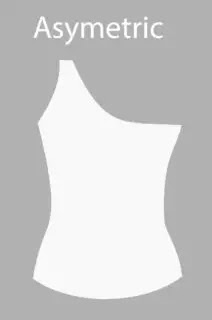Embroidery in India has come a long way. As fashion trends changed with time, Indian Embroidery adapted to the new climate and managed to remain elegant and sophisticated. While each embroidery technique possesses its speciality, one thing is for certain, each one of them makes a serious style statement. Let’s take a glance at 10 Traditional Embroideries of India that bring with them an edge on the fashion front:
1. Chikan / Chikankari
Source: Pinterest
The present form of chikan work is associated with the city in Uttar Pradesh, Lucknow. Chikan embroidery on silk is Lucknow's own innovation. The other chikan styles are that of Calcutta and Dacca. However, characteristic forms of stitch were developed in Lucknow: phanda and murri. The artisans usually create individual motifs or butis of animals and flowers. The designs are first printed onto the fabric not with chalk, but with a mixture of glue and indigo.
2. Zari / Zardosi
Source: Pinterest
The most opulent form of Indian embroidery is the Zari and the Zardosi, known since the late 16th century, brought in India by the Moghuls. This form uses metallic thread. Originally, Zardosi embroidered clothes used gold or silver threads with precious stones and pearls making them luxury items, exclusively worn by the rich. Available on sarees, suits, blouses, and lehengas, Zardosi gives you the rich look which brings with it confidence and glamour.
3. Aari
Source: Pinterest
The name of this embroidery comes from the hooked, sharp needle, which is used for this technique. Aari owes its origin to the Mughals and is practised in Rajasthan, Lucknow, and Kashmir. The very image of finery, the Aari embroidery is created by using a hooked needle to make chain stitch loops, often using beads and sequins for embellishments. Easy to maintain and style, any material with Aari embroidery provides comfort with fashion.
4. Banjara
Source: Pinterest
The nomadic tribes of Banjara did not limit themselves to a single geographical location which allowed this style of embroidery to disperse across various regions, facilitating variations in the technique and designs. With a combination of patchwork and Mirrorwork, the Banjara embroidery gives vibrance to the everyday ethnic look. It is included in both modern garments as well as traditional ones.
5. Gota
Source: Pinterest
Born in Rajasthan, this embroidery technique uses zari from Lucknow to trace elaborate patterns, creating different surface textures. Fabrics such as georgette or bandhini are chiefly chosen upon which the Gota is appliquéd by hemming or backstitching. With the motifs of nature, Gota embroidery gives a graceful and royal impression. It is chosen by brides for its unique patterns and lightweight design, variety in colors, and choice of fabrics.
6. Shisha / Mirrorwork
Source: Pinterest
Brought into India by Iranian travelers during the 17th century, Mirrorwork was originally done with Mica. Patronized by Rajasthan, Haryana, and Gujarat, Mirrorwork varies in use and style according to region and taste. With plenty of options available, clothes with Mirrorwork can be worn as daily wear or on special occasions. Despite the constantly changing fashion trends, Mirrorwork stays in vogue because of its incomparable approach to embroidery.
7. Kashmiri
Source: Pinterest
This embroidery borrows its name from its place of birth, Kashmir. Also known as Kashida embroidery, the cloth for this embroidery was woven and embroidered by the members of the same, often extended, family. Dark-colored woollen clothes for winter, light-coloured cotton clothes for summer are chosen upon which base patterns are created. Styled with likewise embroidered juttis and oxidized silver jewelry, you cannot go wrong with Kashmiri embroidery.
From the texture to the design, the color to the fabric, each element in every embroidery tells a story. Whether you choose Zardosi or Aari, Kashmiri, or Gota, Shisha or Chikankari, you should know that when it comes to making a fashion statement, Embroidery never goes out of style.




2 Comments
🌟🌟🌟🌟🌟
ReplyDeleteNice🥰🥰
ReplyDelete